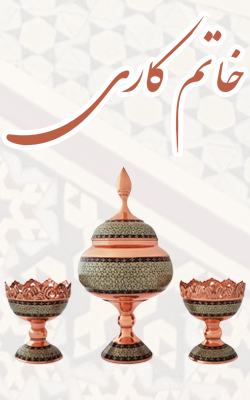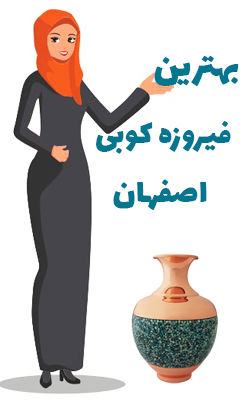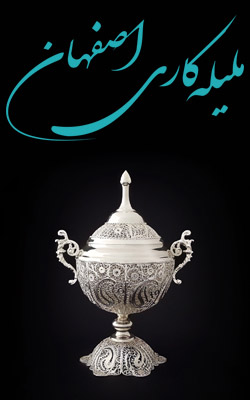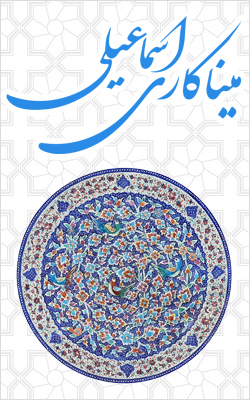- نویسنده : امید حسینی
You must be familiar with traditional Iranian art in order to answer this question. The branches of classical Iranian painting include Tazhib and Tashir. Those interested in Iranian handicrafts are attracted to simple Tashir and Tazhib designs created by artists on various materials.Many handmade goods, such as kitchenware, may be found at Isfahan Bazaar, where artists from Isfahan have painted the basic flower and bird (Gol-O-Morgh) designs. And you’ll have a better understanding of the art’s glories. It will be really nice to combine the Tashir style with other artworks. Introducing the art of Tashir
Traditional painting includes areas such as Tashir and Tazhib paintings. Although the skill of painting Tashir may be unfamiliar to the general public, many people see diverse patterns of Tashir painting on dishes, paintings, and even historical structures in their everyday lives.
In the BazareMina online handcrafts store, you may examine and order a variety of handcraft items that you desire. Those who are interested can also receive Tashir design painting instruction from some of our country’s greatest experts.
The variety of Tashir art designs
The numerous varieties of Tashir designs are known as the types of this magnificent Iranian art, and it is classified into two broad sorts:
• Plant (flowers and plants, or birds and flowers) design
Images are drawn on the top and bottom of leaves and flowers in this style, which has been employed on important and beautiful books like the Holy Quran. Gold, white, blue, or the primary color, as well as azure, black, or ocher and such, are used to paint the flowers. It is also known as “Khatai Tashir” because of the usage of floral and plant themes and designs. The idea of the origin of such a design is that a bird is in the role of a lover and a flower in the role of a beloved.

• Wild design
There are two types of this design: Nakhjiri and Gereft-O-Gir, which Gereft-O-Gir is a well-known and extensively used method and all animals and creatures, from natural organisms to legendary and fanciful ones like Simorgh, Phoenix, and Dragon, are drawn in this manner in a unique way and in line with the book’s theme. Few colors are employed in this sort of painting.
The major theme of the Gereft-O-Gir design is animal conflict, which might include many birds or any other type of animal.
• Oil painting design
This kind of Tashir has its origins in the Safavid period, when it was utilized to coat manuscripts with oil. Small patterns were used on black covers with a gold hue or any other color that stands out nicely against a black background in this style. Because it was created by Aqa (Mr.) Mirak Esfahani, this type of painting art is also well-known in the Miraki style.
The distinction between Tashir and Tazhib
It will be simpler to appreciate the distinction between Tashir and Tazhib, now that you have a thorough understanding of the art of Tashir and Tazhib Although both are employed for embellishment and border work in current Iranian painting or miniature painting, also there are notable variances. The term Tazhib comes from the Arabic word “Zahab”, which means gold. Religious and historical manuscripts and books, Tashir collections, calligraphic works, and art battles are all reproduced and decorated with ornamental designs and abstract themes in this so-called art.
Tazhib refers to the fact that the lines in this form of painting are black and painted with gold water. Because it is used in conjunction with silver or copper, the gold used for Tazhib has a variety of hues, and its color is green. And then it becomes crimson. Furthermore, Tazhib themes are primarily Islamic and geometric, but animal and plant motifs are also employed in Tazhib, but they are never utilized with animal patterns to embellish the pages of the Holy Quran.
More information about the equipment and colors needed for Tashir
The tool for painting in the art of Tashir is the same as the tool for painting in the art of Tazhib, and the white color is covered with the colors used in the artwork’s text, and then the text of the artwork is converted into various colors.
Only gold color or its derivatives, such as copper-green-gold, reddish-gold and yellow-gold or Ashrafie-orange-gold, should be used to paint in Tashir, and the same color range is also utilized for Worktext coloring.Of course, in Tashir, one or two shades of gold are generally employed on the background, with a color that is darker than the background color. The masters of Tashir art have divided this form of painting into two groups based on the colors used: golden Tashir and multicolored Tashir.

Tashir’s background and history
The design of an image or text frame’s border, known as Tashir, has a long history in Iranian collected works of poets and manuscripts. Since the 9th century AH, writings have documented the art of Tashir. However, numerous types of decorating were utilized in prior eras. Even before the official religions with holy books, there were frequently animal symbols and occasionally combinations of man and animal in religious beliefs. As a result, animal themes have been used in art since man first created his works of art. Many pieces of art in the fields of handicrafts and architecture have been left from the Sassanid period. Beautiful designs, generally in the shape of various animals, may be seen on plates, cups, and even weaving from that time period.
Iranian dynasties have worked constantly to promote and enhance Iranian culture and art since the entrance of Islam in the country. Art flourished and artists were respected throughout the Seljuk period. Architecture, metalworking, painting, Tazhib, Tashir, bookbinding, and other arts linked to bookbinding flourished throughout this period.The usage of natural plant themes in book decorating and to embellishing some manuscripts is noticeable in the early Timurid era, and beautiful Tashir with attractive colorings progressively appeared from this period onwards. Perhaps the most comprehensive approach of book design is through these Tashir.
More information and details about Tashir art
The link between Tazhib and picture is known as Tashir. Later, a new way of Tashir emerged, and for the first time, a human picture was utilized in ornamentation. We come across artwork from the period of Sultan Ahmad Jalayer that combines pictures of humans, angels, and animals.The full pages were covered with golden decorations just before Shah Tahmasp I of the Safavid dynasty began his rule. Tashir was quite popular at that period, and the text or topics were sceneries with human and animal figures, which were typically painted with various golden hues.The methods and approaches used to name types, as well as the location where they are presented, are more important considerations. Plant Tashir design, also known as flower and plant Tashir, and wild Tashir design are the two forms of Tashir. On the margins of books, representations of leaves and flowers are drawn on the top and bottom of leaves and flowers in gold, white, blue, or the primary hue, and the base is azure, black, or mash flower, and the like.
The only plant form of Tashir is employed in the beautiful arrays of the Holy Quran and its cover, in addition to Tazhib. The basic design of pictures and motifs of birds, land, sea, and mythological animals in specific combinations in line with the primary topic of the book with the least color and symbolically emerges in the description of the beast, which is based on two types of Nakhjiri and Gereft-O-Gir. The Tashir also includes images of the sky and clouds, as well as mountain and rock ranges.
Conclusion
The arrangement and movement frequently provide diversity in perception and follow the eye as it moves around the image and is directed into the image. This appearance has minimized eye fatigue and monotony in the audience, as well as happiness and movement. Iranian artists’ great comprehension and good taste have been exhibited via their knowledge and awareness of visual art in the presentation of Tashir.Tashir is a type of manuscript decorating that is used in the margins of manuscripts, as well as the margins of paintings, and has played an important role in writing, book decoration, and art since ancient. This art has been employed in carvings, engravings on metals and utensils, and weavings, with valuable instances from ancient times. The surviving reliefs of Persepolis (Takht-e Jamshid) historical monuments, as well as the numerous shapes in the inscriptions and the accuracy and skill with which they were carved, support the assumption that the people who created Tashir had a unique understanding of nature and its application in the arts at different eras.Manuscripts in Tashir are frequently embellished with one or more gold color borders in the margins of manuscripts. These themes may be found in the book’s margins and titles, as well as on the cover and pencil holder. Besides book covers and painting margins, this technique has been applied in different places, such as murals, decorative curtains, and metal engraving are all examples of this style.




























